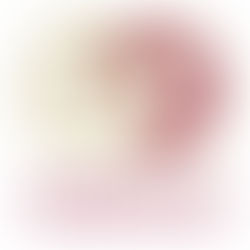Talk by Michael Eden - ceramic maker

Unfortunately not that many students wrestled the 'Beast from the East' into submission to attend this most informative talk by Mike Eden in a very, very cold lecture theatre. Their loss as this was a great talk of how combine new digital technologies with an understanding based on a traditional craft background to investigate and make new innovative art/objects that questions and investigates not only our relationship to the past but also looking at our position within an increasingly digital world.

Michael gave us a quick resume of his early start as a 'traditional' potter who, after making a living out of producing traditional functional slipware, got interested in digital coding while creating his website. This started him off to investigate how he could use digital coding to produce his own ceramics through the use of new technology, i.e. the development on 3-d printing.
His initial pieces started off with wanting to explore the abstract qualities and relationships between the interiors and exteriors of vessels. At the very heart of this was his interest in visual perception and how we understand the world around us. These first pieces, not yet 3-d printed, were intended to examine the there act of looking:


As ceramic students we had the added advantage that he spent some time with us after the lecture for further questions and discussions. What struck me as most impressive, whether you liked the outcome of his printed ceramics or not, was his way of thinking. I would not describe him a potter in the traditional sense even though that is where his roots are but as a ceramic concept artist. It is the intellectual engagement with the digital age and the possibilities and how they can be applied and linked back to historical crafts and their makers which is the most impressive. He started this development seriously when embarking on a MPhil at the RCA and his main incentive was to, as he said, "I wanted my thinking to be challenged." I guess, one of the outcomes of his research and ceramic practices is that he is challenges other people's perception of what it is to be a potter or ceramicist. I guess to avoid such potentially restrictive categorisation he refers to himself on his website as a 'maker'. Traditionalists have criticised him for not being a potter anymore. I think maybe his pieces offend some potters as they are not made from clay and as such cannot display the materiality of clay, which is central to many potters. He also doesn't use his hands to form his pieces, except for on the keyboard. Or is it just the 'blingyness' of his creations?

However, he is trying to develop a more clay-like material to print in. In a way the computer is just a tool. The 3-d printing a more mechanised process which, in my opinion, isn't so different than slip casting clay.
The examples below show how he tried to create coiled vases using 3-d printing. It is a complex process by which he has to write the code to produce the ceramic rods that then coil into a recognisable pot shape. Again, he strongly referencing the past of pottery traditions and techniques just accessing them from a different perspective.

As said, most impressive to me is Michael Eden's enquiring mind and openness to new ideas and processes. The way he engages with the current reality with our increased reliance on digital tools, which increasingly influence and shape our understanding of the world, is what appeals to me.
Thus, my favourite piece he showed us is the Mnemosyne box (2011) made from pink coated nylon. The object itself is intriguing as from the side it looks like a decorative patterned jewellery box. However, when seen from above its cultural currency is revealed. To quote from his own website: "So the idea is that the owner can scan the Mnemosyne with a Smart phone barcode reader App, which then connects to a website page where stories can be told, memories stored, photos deposited, sounds locked away, thereby creating a simultaneous actual and virtual experience." Additionally he has included a memory stick containing the code used to print this box from and a letter of instructions to whoever will come across this in the future. This pink box is very complex on so many levels!


I wish after my MA I can also continue to combine the same purposeful development of my own work with an openness to influences without falling into comfortable complacency.

















